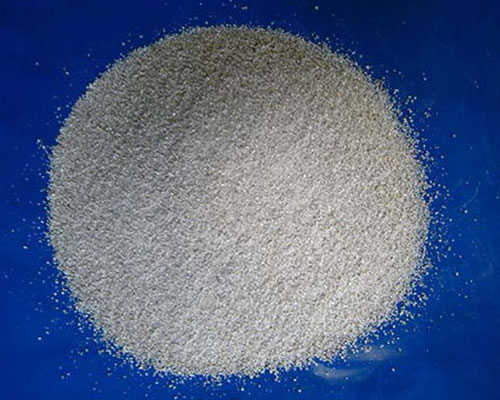The covering fluxes are used to cover the melt. These fluxes composed of salt compounds will form a liquid at the normal melting temperature of aluminum, and they provide a molten barrier “blanket” on the metal surface to protect it from oxidation and hydrogen adsorption. The covering flux is mainly a mixture of NaCl and KCl salts and a small amount of fluoride. Fluxes with these three compounds are suitable for almost all types of aluminum alloys, except for hypereutectic aluminum alloys and aluminum-magnesium alloys with Mg exceeding 7%.
Over the years, many different commercial covering fluxes have been developed. They preferably add a certain proportion of NaF, KF, Ca2F and other compounds (such as CaCl2) to lower the melting point of the flux and provide cleanliness generated by gathering dust and oxides. The typical alkali composition is 47.5% NaCl, 47.5% Kcl and 5% Na3 AlF6 or cryolite.
Foundries use these types of fluxes during heavy oxidizing foundries to remelt and process chips and in the metal holding temperature range of over 770 to 790 C. In the smelting operation, during the melting of fine chips, turning, sawing, fine powder, etc., the covering flux is mixed in a rotary furnace. Generally, the melting point of covering fluxes used for melting applications is lower than the melting point of fluxes used for casting applications.

The refining flux is designed to help separate the entrained aluminum from the attached oxide skin, which surrounds the aluminum in the dross layer. When the wet slag is removed from the furnace, a large amount of useful metal is lost. Therefore, many operations attempt to reduce the metal content by treating the slag in the furnace with an exothermic flux. They contain oxidants and fluorides to generate temperature and help promote the separation of oxides and metals. If the flux is applied excessively, the exothermic reaction will consume aluminum while consuming heat, and may cause the metal contained in the aluminum dross to lose up to 20%.
The flux may be based on a salt mixture of chloride, double fluoride and oxidizing compound. Therefore, the coating flux can react exothermically, generate heat and improve flux wettability. The wetting effect of the flux promotes coalescence, making the fine aluminum droplets closer together, forming larger droplets, which are easy to recycle. The work of the flux is believed to be due to the effect of surface tension and the dissolution of alumina.

